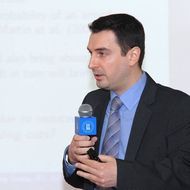- A
- A
- A
- ABC
- ABC
- ABC
- А
- А
- А
- А
- А
- HSE University
- Faculty of Economic Sciences
- Department of Theoretical Economics
- Courses
- Economic Development in the Long-Run: Theory and Empirics, 2022/23 Academic year
-
Department
109028, Moscow,
Pokrovsky Boulevard 11, Rooms: S1029, S1030
Phone: +7 (495) 772-95-90*27172, 27173, 27174
The Department of Theoretical Economics brings together highly qualified specialists in various fields of economics, including micro and macroeconomics, monetary and financial theory, economic history and the history of economic thought. Our mission is to teach economic disciplines at HSE on the level of leading Western universities.
In press
Ochirova E., Miriakov M., Dranev Y. et al.
Global Business Review. 2024.
Olga Demidova, Elena Kayasheva, Artem Demyanenko.
In bk.: Eurasian Business and Economics Perspectives: Proceedings of the 38th Eurasia Business and Economics Society Conference. Vol. 25. Springer Publishing Company, 2023. Ch. 13. P. 209-232.
Tabashnikova D., Sandomirskaia M.
Economics. EC. Высшая школа экономики, 2023. No. 263.
Economic Development in the Long-Run: Theory and Empirics
- About
- About
- Key Figures & Facts
- Faculties & Departments
- International Partnerships
- Faculty & Staff
- HSE Buildings
- Public Enquiries
- Studies
- Admissions
- Programme Catalogue
- Undergraduate
- Graduate
- Exchange Programmes
- Summer University
- Summer Schools
- Semester in Moscow
- Business Internship
-
https://elearning.hse.ru/en/mooc/
Massive Open Online Courses
-
https://www.hse.ru/en/visual/
HSE Site for the Visually Impaired
-
http://5top100.com/
Russian Academic Excellence Project 5-100
- © HSE University 1993–2024 Contacts Copyright Privacy Policy Site Map
- Edit







Instructor
Arbatli, Cemal E.
Course Syllabus
Abstract